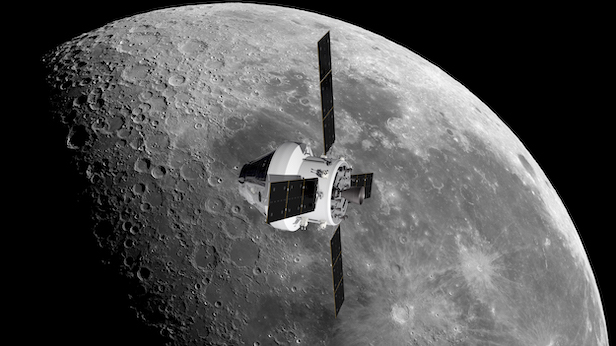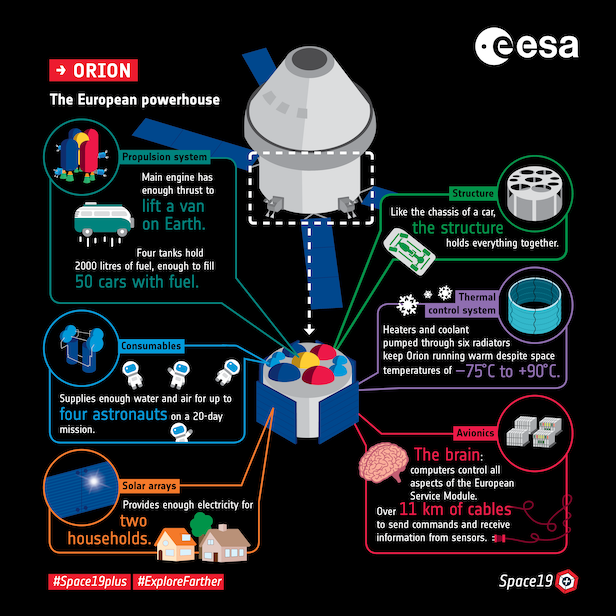NASA and ESA team up once again to create the third European Service Module
This third module will provide astronauts with air, water, electricity and more for when they reach the lunar surface in 2024

Artist’s impression of Orion over the Moon. ESA has designed and is overseeing the development of Orion’s service module, the part of the spacecraft that supplies air, electricity and propulsion. Image credit: NASA/ESA/ATG Medialab
NASA and the European Space Agency (ESA) have a long term plan for Europe to deliver the European Service Modules for Orion. With NASA’s announcement to bring humans back to the lunar surface before the end of 2024, it was also decided that the third ESA-provided European Service Module will contribute to this mission.
The Artemis-3 mission is slated to launch on NASA’s Space Launch System in 2024 and will send up to four astronauts on-board Orion to a lunar orbit where the spacecraft will dock at the planned Gateway. From there, two of the astronauts will board a lander to ride down to South Pole of the Moon.
ESA has already supplied the first European Service Module that is being connected to Orion’s Crew Module this month. The second module is being built in Bremen, Germany, for shipment next year to United States.
The agreement gives the go-ahead to start building the third European Service Module for Orion, it will provide everything the astronauts need to live and arrive safely in lunar orbit including air, water, electricity, propulsion, temperature control and structural stability.
A contract for two European Service Modules is already in place with ESA’s prime contractor Airbus DS in Bremen, early procurements for the third have been initiated, and the full contract is currently under negotiation.

Orion is NASA’s next spacecraft to send humans into space. It is designed to send astronauts farther into space than ever before, beyond the Moon to asteroids and even Mars. Image credit: ESA–K.Oldenburg
The Artemis-3 mission will involve the landing on the Moon of two astronauts, the thirteenth and fourteenth humans to walk on the Moon. For the first time they will visit the South Pole of the Moon, a place with permanently-lit areas and eternal shadows, where they will seek ancient lunar ice.
“The team welcomed the agreement with elation,” says ESA’s Philippe Deloo of the European Service Module team, “we are already proud to be developing the first spacecraft to return humans to the Moon, but the spacecraft that will see humans land on the Moon is on another level.”
“Working on this third module really brings it home: we are working on the hardware that NASA aims to bring the first woman to the Moon,” says Nico Dettmann, ESA’s head of development at Human and Robotic Exploration.
“The Orion spacecraft is instrumental to the infrastructure we are building around the Moon – including assembling the Gateway and returning samples gathered by robotic missions,” concludes Nico, “we are pleased to continue the fruitful international exploration cooperation with NASA, 50 years after the first Apollo landings.”
Keep up to date with the latest news in All About Space – available every month for just £4.99. Alternatively you can subscribe here for a fraction of the price!




